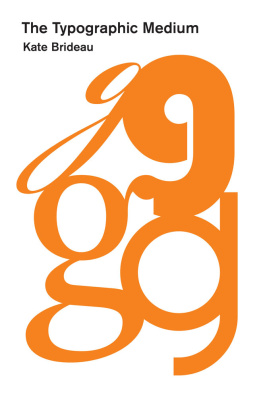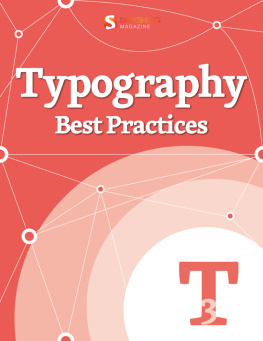Contents

A QUARTO BOOK
Copyright 2014 Quarto Inc.
Published by John Wiley & Sons Inc., Hoboken, New Jersey
Published simultaneously in Canada
No part of this publication may be reproduced, stored in a retrieval system, or transmitted in any form or by any means, electronic, mechanical, photocopying, recording, scanning, or otherwise, except as permitted under Section 107 or 108 of the 1976 United States Copyright Act, without either the prior written permission of the Publisher, or authorization through payment of the appropriate per-copy fee to the Copyright Clearance Center, 222 Rosewood Drive, Danvers, MA 01923, (978) 750-8400, fax (978) 646-8600, or on the web at www.copyright.com . Requests to the Publisher for permission should be addressed to the Permissions Department, John Wiley & Sons, Inc., 111 River Street, Hoboken, NJ 07030, (201) 748-6011, fax (201) 748-6008, or online at www.wiley.com/go/permissions .
Limit of Liability/Disclaimer of Warranty: While the publisher and author have used their best efforts in preparing this book, they make no representations or warranties with the respect to the accuracy or completeness of the contents of this book and specifically disclaim any implied warranties of merchantability or fitness for a particular purpose. No warranty may be created or extended by sales representatives or written sales materials. The advice and strategies contained herein may not be suitable for your situation. You should consult with a professional where appropriate. Neither the publisher nor the author shall be liable for damages arising herefrom.
For general information about our other products and services, please contact our Customer Care Department within the United States at (800) 762-2974, outside the United States at +1 (317) 572-3993 or fax +1 (317) 572-4002.
Wiley publishes in a variety of print and electronic formats and by print-on-demand. Some material included with standard print versions of this book may not be included in e-books or in print-on-demand. If this book refers to media such as a CD or DVD that is not included in the version you purchased, you may download this material at http://booksupport.wiley.com . For more information about Wiley products, visit www.wiley.com .
Library of Congress Cataloging-in-Publication Data
Dabner, David.
The new graphic design : a foundation course in principles and practice / David Dabner. -- 5th edition.
pages cm
Originally published: Graphic design school. 1991.
A quarto book.
Includes index.
ISBN 978-1-118-13441-2 (pbk.)
1. Graphic arts. 2. Commercial art. I. Swann, Alan, 1946- Graphic design school. II. Title.
NC845.D33 2013
741.6--dc23
2013018920
ISBN: 978-1-118-13441-2
QUAR.GRS5
Conceived, designed, and produced by
Quarto Publishing plc.
The Old Brewery
6 Blundell Street
London N7 9BH
Senior editor: Katie Crous
Co-editor: Ruth Patrick
Copy editor: Claire Waite Brown
Art editor and designer: Jacqueline Palmer
Art director: Caroline Guest
Picture researcher: Sarah Bell
Proofreader: Sarah Hoggett
Indexer: Helen Snaith
Cover Design: Michael Rutkowski
Cover Art: Bogusaw Mazur/Alamy
Creative director: Moira Clinch
Publisher: Paul Carslake
Introduction
This book is written with the intent of providing an introduction to the underlying principles of good graphic design, whether it is print-based, web and interactive, or environmental. The content has been constructed to mirror, in part, how the subject is taught in college design programs, and the illustrations, which are a mixture of student projects and professional design work, have been carefully chosen to illuminate specific teaching points. Many of the sections contain step-by-step exercises and assignments, offer practical advice, and point toward further resources.
The first part of the book, Principles, supports the idea that a thorough understanding of design principles should support the process of creating design works in response to specific briefs and problems, while allowing room for self-authored experimentation and visual freedom. As you are introduced to the basics of research, typography, color, photography, and composition, you will learn to become visually aware and able to articulate these design principles into your future works. You will also gain some understanding that these principles cross disciplines and are the vocabulary of visual literacy.
In the second part of the book, Practice, you will be introduced to invaluable practical skills that are important support systems to the skills sets in research and creative process you have read about in Part One. They do not replace them, but serve as methods and practices for developing critical problem-solving skills, and learning to manage complex projects. Designers need the whole range of skills to be truly successful, and expertise will come with continued study and practice in both areas. Unless you learn the practical skills and technology of design production, including how to manage images, create digital files for specific media, and build and structure a website, you will be unable to bring your brilliant concepts to life.

None of these visual skills can be viewed in isolation from the context in which design happens and its larger role in society and the world. Designers are visual communicators, often giving visual voice to new and provocative ideas. They create images that can inform, persuade, and entertain millions of people. This comes with great responsibility, and it is crucial to be aware of the role of design in shaping the world we live in, and changes in the discipline that transcend trends or the latest software. While any kind of comprehensive account of these topics stands outside the scope of this book, becoming visually literate and technically skilled should go hand in hand with an understanding of such issues as communication theories, global audiences, systems theory, sustainable issues in design, and the changing role of technology.
Finally, design education is a lifelong experience that can bring great personal satisfaction and reward. With this book as a gateway, a new way of seeing the world may lead you to a career path that will be a constant source of surprise and delight.
PRINCIPLES
The first part of this book is concerned with design principles, the building blocks that connect the basics of all good design. Every discipline has its own sets of rules, methods, specialized technologies, and technical requirements. Each one is rooted in the interactions of its history, theory, and practice, but unlike learning law or biology, the language of design is visual. It involves the need for a highly developed awareness of visual relationships, proportion, the perceptions of visual principles, and of the modern world and its complex events and practices. A good designer can filter this information and create relevant, engaging, visually eloquent design that responds to multiple problems, needs, and contexts. While a design student needs to develop the research, concept-development, compositional, and organizational skills associated with design, he or she also needs to be engaged with the world, and interested, aware, and sensitive to the changing contexts in which design plays a part.











